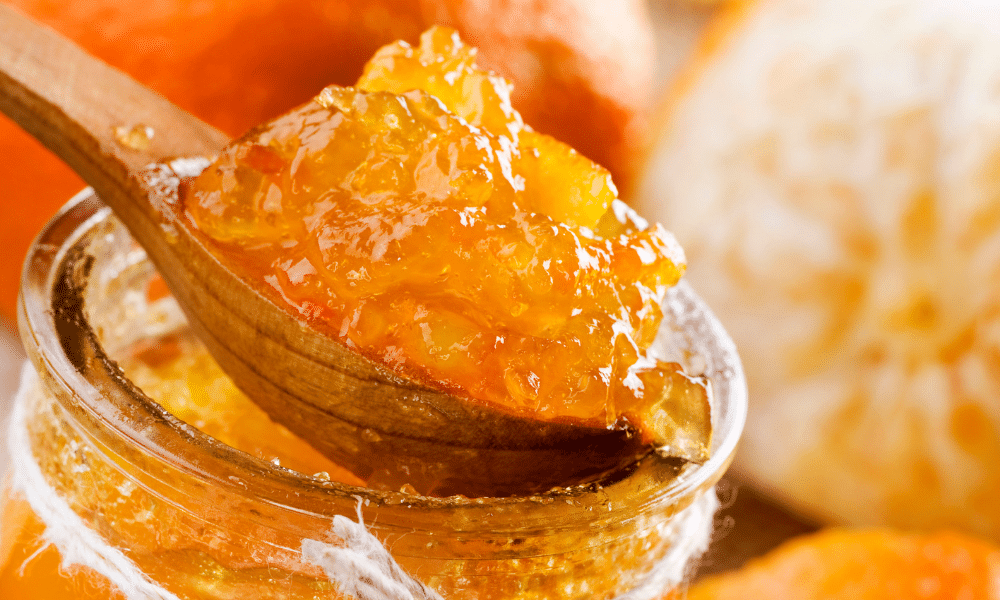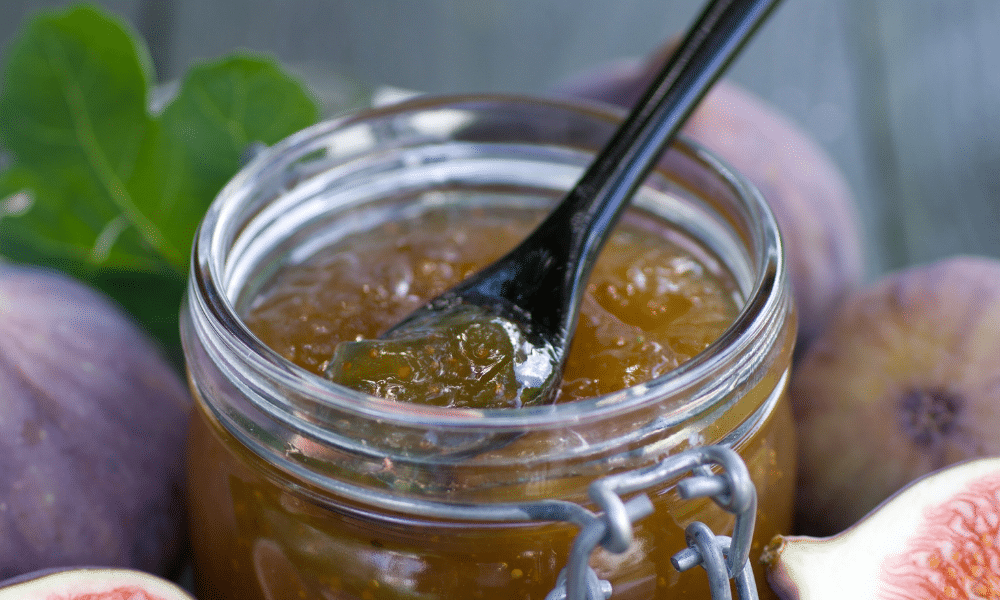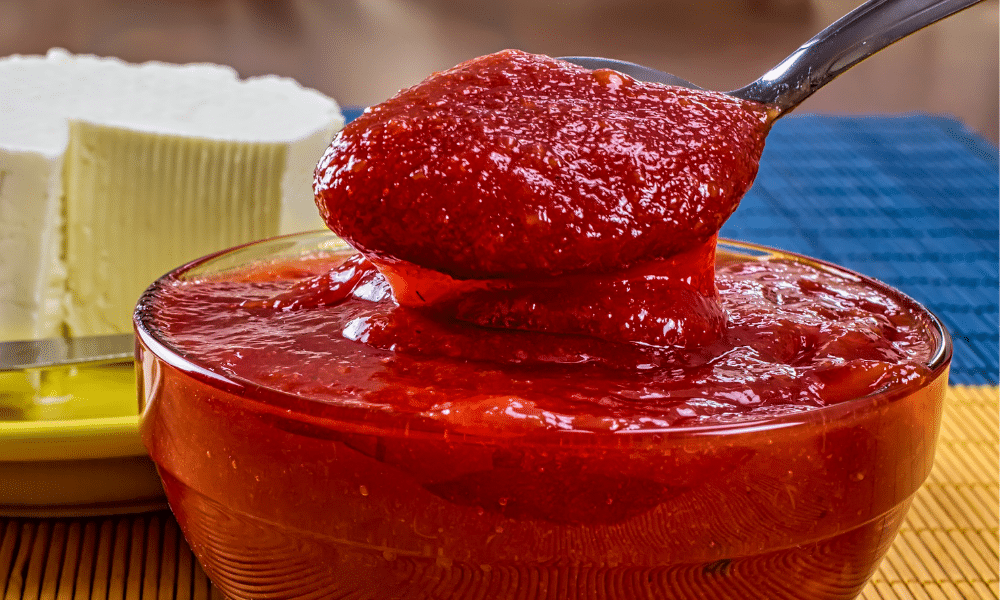As the name would suggest, quince paste is made from the quince fruit – a fruit produced mainly in Turkey and China. Very rarely will quince fruit be consumed raw, instead of better suited for eating as marmalade or paste.
Quince paste is the most popular way to eat quince, pairing very well with pungent cheeses and used in sweet bakes or as a spread.
Although Turkey and China produce the most quince fruit, Spain and Mexico cuisines most often use quince paste in main dishes.
Quince paste is almost exclusively found in specialist cheese shops in the UK. But if you are on a budget or don’t live near a speciality cheese shop, here are a few substitutes you can use instead.
Our 3 Substitutes for Quince Paste
When raw, quince fruit is extremely tart and unpleasant to eat. But when made into a paste using sugar and water, it is sweet and delicious while still maintaining some of the slightly tart flavours to balance out the sweetness.
Quince paste also has a very predominant floral aroma and taste.
The thickness of quince paste due to its naturally high pectin content makes it ideal for charcuterie platters or as a pastry filler.
Here are our top 3 substitutes for quince paste:
1) Marmalade
Like quince paste, marmalade is purposely made to be sweet without overpowering its pairings, such as cheese or pastries.
Many people think that marmalade and jam are the same, but this is untrue. Jam is extremely sweet and is made using mashed up fruit pulp.
Marmalade, while still sweet, had a bitter balance as it is made from both the juice and peel of fruits. Some marmalades will also include the pulp bringing forth some tarter flavours.
Marmalade is made similar to quince paste with sugar and water, making it very thick. Texture-wise, it will not be as smooth, but it will be the right thickness to use in every way that quince paste is used.
Opt for Sweet Marmalade
Most marmalades are made from some kind of citrus fruit. But sweet orange marmalade will have the same flavour profile as quince paste, if not a little more complex.

2) Fig Jam
Raw quince fruit, while unique, can be comparable to other fruits. Raw figs, on the other hand, are a more stand-alone flavour. But when figs are turned into jam, their flavours change.
People who don’t like raw figs tend to still enjoy fig jam as it is a lot sweeter and lacks the harsh flavours of raw fig. Its flavour profile is still distinguishable from quince paste, but fig jam is close enough to make an excellent substitute.
You will often find fig jam already included on charcuterie platters alongside quince paste. Though the sweetness of fig jam makes it a good substitute to be used in baked goods, too.
Use Skinless Jam
Most fig jam is made without the inclusion of the fig’s skin. However, some manufacturers do include the skin in their products which makes the jam a harsher texture. For a substitution most resembling the smooth texture of quince paste, use skinless fig jam.

3) Guava Paste
Guava is a tropical fruit with its own unique flavour in its own right. Many people say that a raw guava fruit is similar to a pear which is a comparison often used when describing fresh quince fruit.,
Like the quince paste production process, guava paste is made first by turning guava into a jam by adding water and sugar and then making it into a smooth and thick paste.
For this reason, guava paste maintains a very concentrated sweet and zesty flavour, which is just slightly different from quince paste but not overly so.
Use It Sparingly
Though the paste itself has a lot of health benefits, such as high fibre and potassium levels, the amount of sugar that some manufacturers add to guava paste makes those benefits redundant. Find some guava paste that is low in sugar if you use it as more than a sandwich spread. Otherwise, use it in moderation.

Other Substitutes for Quince Paste
Some of the above substitutes may be overly expensive depending on the stores you have available to you. Here are a few more quince paste substitutes that you can use on a budget:
- Citrus Jam – Jam can be overly sweet, but if you are not a fan of marmalade, then you can use a citrus flavoured jam instead. Using seedless jam to achieve the same smooth quince paste texture is better.
- Apple and Pear Peels – Quince is often described as a mix between an apple and a pear. If you only have fresh fruit to hand, cook down some apple and pear peels with some sugar until it forms a thick paste. It will take more effort but is very inexpensive.
Summary
Quince paste is most often seen on charcuterie platters, but its sweetness makes it a great sandwich spread or flavouring for baked goods.
As such, ingredients with a similar consistency and sweet flavouring – like marmalade or fig jam – make the best quince paste substitutes.
